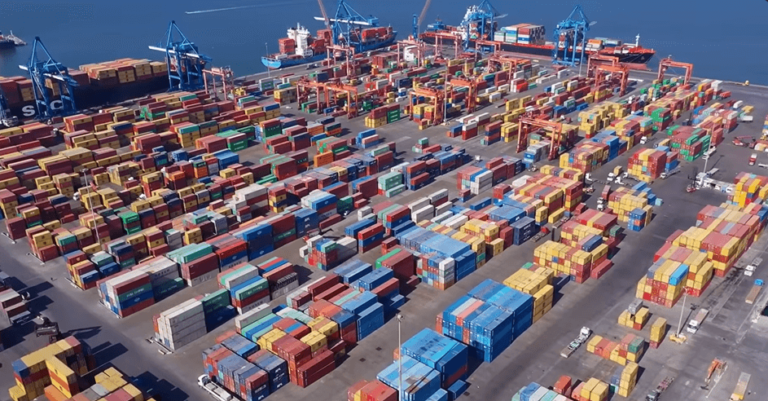In a world still reeling from pandemic-induced learning setbacks, one small country in Northern Europe has emerged as a beacon of educational success: Estonia.
With a population of just 1.4 million—spread over a landmass smaller than Lower Saxony—this Baltic nation has managed to outperform nearly every other country in Europe in the latest PISA study. Estonian 15-year-olds are not only reading better than their peers but are also excelling in math, science, and creative problem-solving. While Germany grapples with what some are calling a second “PISA shock,” Estonia’s school system is holding strong—and even gaining ground.
So, what’s Estonia’s secret? How has this young nation, once part of the Soviet Union, transformed itself into a European education powerhouse? Here are five key reasons behind Estonia’s rise to the top.
1. A Growth Mindset Culture
One of the most surprising findings in the PISA 2022 results was Estonia’s dominance in creative problem-solving and idea development—two newer categories introduced to better reflect 21st-century skills. Estonian students aren’t just good test-takers; they’re confident innovators who believe in their own ability to shape their future.
This mindset, often referred to as a “growth mindset”, is exemplified by students like Carol, a 17-year-old attending Mustamäe Gymnasium in Tallinn. “I need to learn a bit of everything so that nothing limits me later on,” she explains. Inspired by books about personal growth, Carol has shifted her focus from career goals to becoming the best version of herself.
According to Estonia’s state agency for economic development and innovation, this self-motivated drive plays a vital role in student success—alongside digital innovation. However, studies show that German students are almost equally likely to possess a growth mindset, which suggests that mindset alone doesn’t fully explain Estonia’s edge. That brings us to the next major factor.
2. A Digital Leap Decades in the Making
While the rest of the world only began taking digital education seriously during the pandemic, Estonia has been investing in it for decades. “When we regained our independence in 1990, we had to rebuild an entire country,” recalls Oleg Shvaikovsky, a former physics teacher and co-founder of a private school in Tallinn. “We were small and poor, so we had to rely on our brainpower.”
The roots of Estonia’s digital strength go back to Soviet times, when the region was designated a programming hub. By the early 1990s, Estonia had already developed its own computer line called “Juku.” Building on that foundation, the government launched the ambitious Tiigrihüpe (“Tiger Leap”) program in 1996, with the goal of digitally equipping all 517 schools in the country. Within five years, every school had internet access and computer labs. Thousands of teachers were trained in IT—a process still incomplete in many parts of Germany, where full internet access in all schools isn’t expected until 2028.
3. Early Tech Education, Even in Kindergarten
Estonia didn’t stop with secondary education. In 2012, it expanded its digital literacy programs to include preschoolers. Today, even children as young as four are introduced to programming concepts through play. At the Pääsusilma Kindergarten in Tallinn, kids use digital pens and interactive toys to learn the basics of coding and logic. For example, drawing two blue squares speeds up a toy train, while red lines make it stop.
Kristiine-Teele Satsi, a teacher at Pääsusilma, emphasises that early childhood education in Estonia is serious business. Children typically spend 10 hours a day in kindergarten, guided by trained professionals—not babysitters or general caretakers. “We follow a curriculum and focus on skill acquisition,” she says. By the time children enter primary school, most can already read, do basic math, and think computationally.
Compare that to Germany, where preschool education is often informal and not geared toward systematic learning. In Berlin alone, nearly 50% of third-grade students fail to meet minimum academic standards.
4. Consistent Investment in Education
Despite its modest size and economy, Estonia has never shied away from investing in its future. According to World Bank data, Estonia has consistently spent a larger share of its GDP on education than Germany over the past 30 years. During the late 1990s, Estonia dedicated nearly 7% of its GDP to education. Today, that figure ranges between 4.5% and 5.5%.
Germany, by contrast, only surpassed the 5% mark in 2010. In 2021, it hit 5.5%—roughly where Estonia has been for decades.
One reason Estonia sees such quick results from its educational reforms is its size. “A handful of policymakers in the Ministry of Education make decisions for 160,000 students,” Shvaikovsky explains. Germany, with its 11.2 million students spread across 16 different federal education systems, faces a far more complex landscape—where efficiency is harder to achieve.
5. School Autonomy and Teacher Responsibility
Another cornerstone of Estonia’s education success is the autonomy granted to schools and educators. While the Ministry of Education sets clear learning objectives, schools have the freedom to decide how to achieve them. Teachers are not civil servants and can, in theory, be dismissed if performance expectations aren’t met.
This system has encouraged schools to build robust leadership teams. At the German Gymnasium in Tallinn, for example, the school is managed by a team of nine professionals, including educational coordinators, IT experts, and a dedicated school development officer.
One standout role in Estonian schools is that of the “Educational Technologist.” These professionals are responsible for equipping teachers with the right digital tools and providing training on how to use them effectively. Teachers can even retrain to take on this role through specialized professional development programs.
Despite the high expectations, teachers are treated with deep trust. “I would never open a classroom door—that’s the teacher’s domain,” says one school director. Christian Ohler, a German teacher at the same gymnasium, agrees: “If a student gets poor grades, I’m expected to explain whether I did everything possible to help them improve. The teacher is responsible for the student’s success.”
And they take that responsibility seriously. Teachers often tutor struggling students after hours—even without pay. If issues persist, coaching and professional support are offered. But punitive measures are rare. As Principal Maive Merkulova puts it, she has yet to fire a single teacher.
A Model Worth Learning From
Estonia’s story is more than a tale of educational success; it’s a testament to long-term vision, cultural values, and strategic investment. The country’s journey from post-Soviet obscurity to global education leader didn’t happen overnight—it was built on a foundation of digital foresight, empowered educators, and an unwavering belief in the potential of every child.
As countries like Germany reckon with their own educational shortcomings, Estonia offers a blueprint worth studying. In a rapidly changing world, where creativity and digital fluency are as important as traditional academic skills, this small Baltic nation is proving that quality education doesn’t depend on size or wealth—it depends on priorities.










+ There are no comments
Add yours